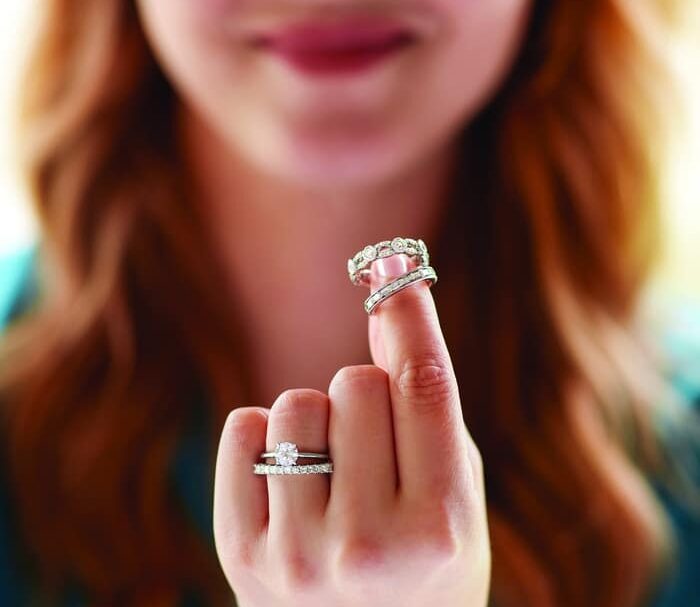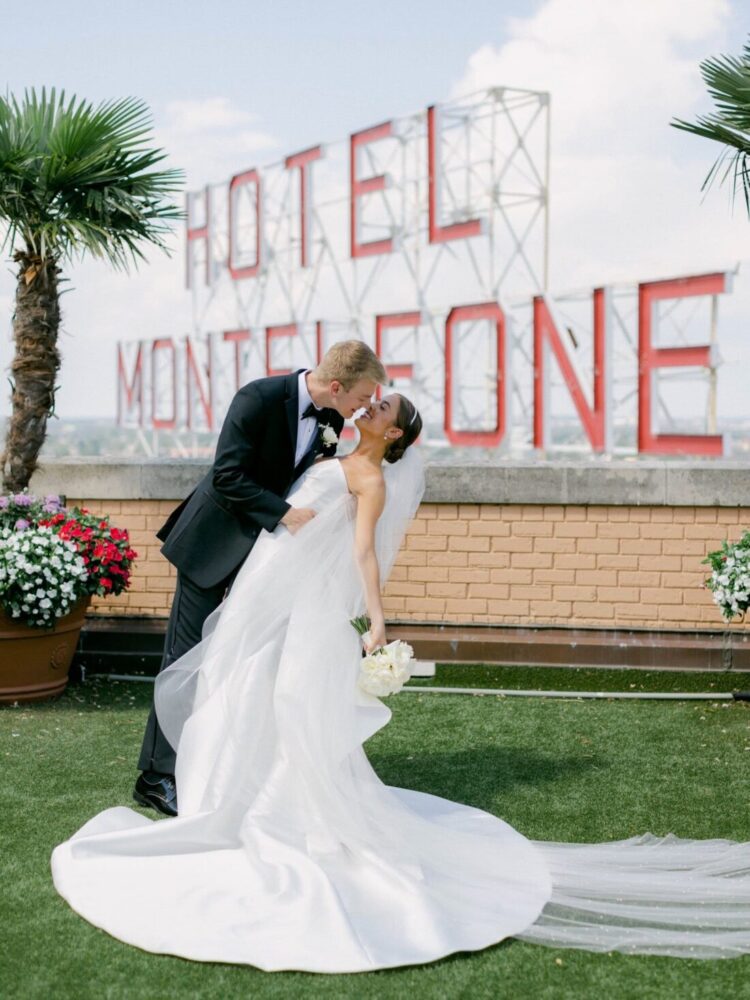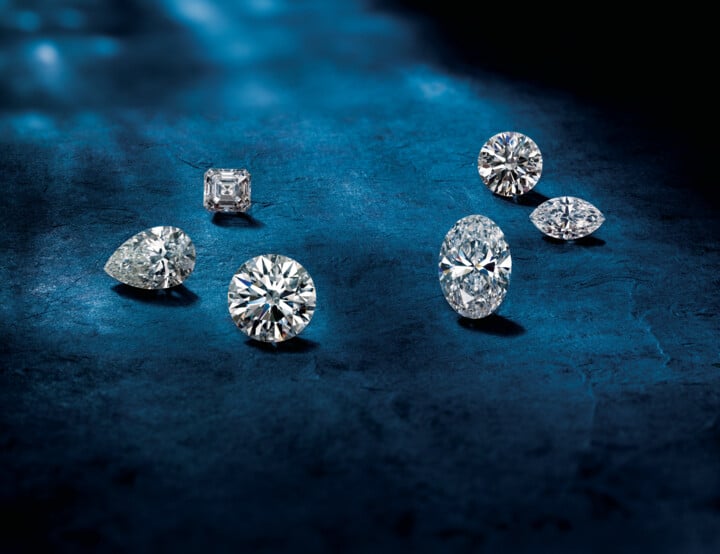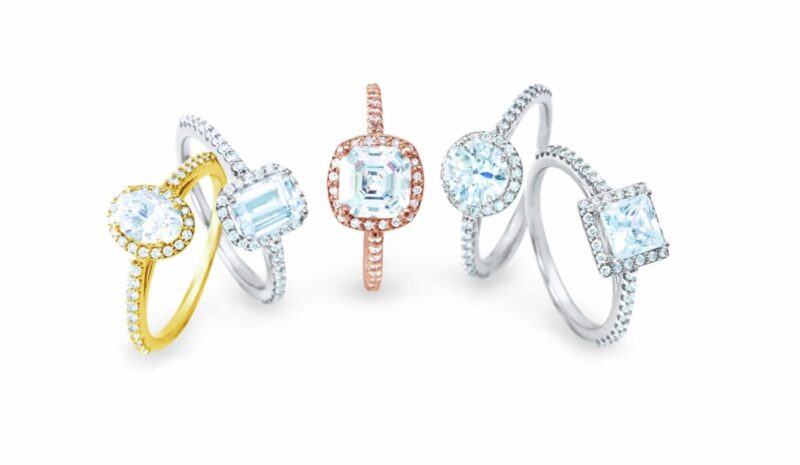The 4 Cs of Diamonds and Why You Need to Know Them Before Buying an Engagement Ring
It can be hard to find the right piece of jewelry, because there are so many factors which you must consider like – Diamond Quality. Above all, you are constantly thinking about the way to get the best quality for your personal price range. At Anne Dale Jewelers, we have primarily focused on our customers’ needs for the past 40 years. In this article, a GIA-certified gemologist and a master goldsmith share their guidelines for buying diamonds – known around the jewelry field as the Four C’s. We take you through each component and explain why it’s important to know them when shopping for an engagement ring.
Cut
Jewelry experts widely regard the cut of a diamond as the top attribute for determining the stone’s quality. This aspect should not be confused with the diamond’s shape, since it indicates how the designer has measured the dimensions and engineered the facets to accentuate its brightest, most dazzling shimmer. Gemologists use three elements to appraise a diamond’s cut:
- Brilliance. This term refers to the luster that is created when the surface and the inside of the diamond catch the light.
- Fire. This term refers to the way in which the stone distributes light across all facets, as if it were a prism.
- Scintillation. This term refers to the twinkling effect that can be seen when the diamond moves, known as the sparkle.
It is easy to spot an inadequately cut diamond. The stone will look dim and lackluster, mostly because it cannot reflect the light well. With an excessively deep cut, light will enter through the middle of the stone and escape through the sides. Shallow cuts will cause the light to enter through the top of the stone and escape through the bottom.
When a diamond has been cut properly, light will enter through the middle of the stone and shine through the top. This ensures that the stone will have greater scintillation, thus sparkling more intensely. Judging a diamond with the naked eye might be easy, but it’s trickier to rate the stone’s cut without a truly defined scale for brilliance, fire, and scintillation.
Diamond Grading System
However, in 2005, the GIA adopted an elementary grading system for figuring out a diamond’s cut. Diamonds which have been rated Excellent are known to catch the most amount of light that enters the stone. Very Good diamonds are still respected as a high-quality product, although they do not have the same appearance as Excellent diamonds. Good-rated diamonds are less refined than higher classifications, but they score similarly in terms of fire and brilliance. Fair diamonds have little value, although they still allow some light to reflect. Poor-rated diamonds are those stones which have such an inferior cut that virtually no sparkle can be seen.
The higher the diamond’s cut rating, naturally the higher the price will be. When you think about the merchandise you will get, though, this fact seems insignificant. Thus, if your budget permits, we recommend purchasing an Excellent-graded diamond for your engagement ring. If not, you can hardly go wrong with a Very Good or Good diamond.
Color
When learning about the four C’s, most people do not realize that diamonds actually have some color. In fact, it is an incredibly rare occasion to find a colorless diamond! Gemologists measure the color of a diamond to calculate the stone’s uniqueness and, as a result, the expected price that jewelry shoppers will likely pay. They use a scale employed by the Gemologist Institute of America, which includes five potential color grades from D to Z.
Stones marked between D and F are absolutely colorless with an icy, pure look. These are the rarest and most superior diamonds, so they will naturally demand the highest cost. Those diamonds with a rating between G and J are nearly colorless, since they do not show any visible color. Most customers buy from this range, as they receive a good piece of jewelry for the price. Diamonds graded between K and M have a faint color to them, so they aren’t very expensive. However, some jewelry buyers still make the best of the situation by pairing these stones with a yellow gold setting. Stones with a score between N and R possess a very light yellow tone, which affects its ability to reflect the light properly. Because of their quality, these diamonds do not often make the showcase at a jewelry store. Diamonds rated between S and Z are the most commonly mined, so you won’t see a high sticker price. However, their light yellow tint makes them the least desirable stones on the market.
Pairing Diamond Color
Now that you will be shopping with the color range in mind, we recommend purchasing an engagement ring where the stone has been graded between G and H. You will save yourself some money, while ensuring that you get an impressive ring. To make it appear colorless, you might think about pairing the engagement ring with a yellow gold setting.
Clarity
Ask any jewelry expert, and they will attest that natural diamonds are never truly perfect. Each one organically forms underground with increased exposure to heat and pressure, so you can expect some flaws and blemishes. Although these irregularities won’t make the stone look any less beautiful, they will decrease its value – and consequently, the price at the jewelry store. Gemologists use the following characteristics to grade the clarity of a diamond:
- Size. This term refers to the width of the stone’s internal defects.
- Number. This term refers to the amount of internal defects found on the stone.
- Location. This term refers to the place where each internal defect occurred on the stone.
- Consequences. This term refers to the potential implications which the internal defects will have upon the stone’s durability over time.
- Visibility. This term refers to the likelihood that a customer will notice the internal defect with the naked eye.
Gemologist Institute of America – GIA
The Gemologist Institute of America developed a grading scale for jewelry experts to judge the clarity of a diamond. These professionals examine the diamond through a loupe set to an industry standard of 10x magnification.
F1 diamonds are categorized as flawless, since gemologists have not observed any blemishes or internal defects. The uniqueness of these stones will make them highly valuable, which escalates the cost for jewelry shoppers. Diamonds with an IF grade have been deemed internally flawless, that is, without any blemishes inside the stone. VVS-classified diamonds, or Very Very Slightly Included stones, only possess internal defects that cannot be easily seen under 10x magnification. VS1 and VS2 diamonds, or Very Slightly Included stones, have minor internal defects that are somewhat noticeable with a jewelry loupe. Diamonds with a grade of SI, or Slightly Included stones, have very visible internal defects. This is especially true when they are viewed through the side. Those diamonds with an I grade, or Included Stones, have obvious internal defects.
In the Loupe
When shopping for an engagement ring, ask your jeweler to provide a loupe for you. This will make it easier to inspect the diamond on your own, so that you choose the correct stone. If you still can’t see any imperfections when you look at the stone through a magnifier, just view it with your eye. Diamonds that do not present any internal flaws, usually those with an SI grade, are your best bet. Chances are, when you can’t pick out the blemishes, other people won’t be able to do it either.
Carats
Unlike the other three C’s, you can get a numerical measure of a diamond’s weight in carats. This calculation does not reflect the size of the stone but rather the heaviness. Gemologists weigh each diamond on a scale that estimates the hundredths and even thousandths of a carat. The hundredths are known as points, and they add monetary value to the diamond.
Sizes range from 0.25 carats to 4 carats, and there are even higher numbers to fit the budget of a Hollywood movie star. Because those larger diamonds are more common than smaller ones, we suggest that you stay within weight classes to save money. In other words, if you’ve settled on a 1-carat diamond, you would want to buy a 0.95-carat ring instead.
Why It All Matters
These four aspects make up the international practice for ascertaining the quality of all the world’s diamonds. For this reason, it is important that you know about them before buying an engagement ring. Otherwise, you might get stuck with an inferior product in the end. What’s worse, if you’re not mindful, you could find the perfect diamond for your fiancée – only to discover that it costs a small fortune because the stone generated high marks on the value scale.
Navigating and prioritizing the four C’s will help you make the appropriate choice for your budget. However, while they offer some helpful guidelines, the four C’s should hardly influence your ultimate decision. Our advice: if the stone does not captivate you, it probably isn’t the right one.
Mandeville Diamond Experts
At Anne Dale Jewelers, we would be happy to answer any questions about the four C’s as you shop for the engagement ring of your dreams. Our newly renovated engagement ring gallery features diamonds in a variety of cuts, color types, clarity grades, and carat weights. Visit our store at 829 Asbury Drive, or contact us at (985) 626-4266 today.





